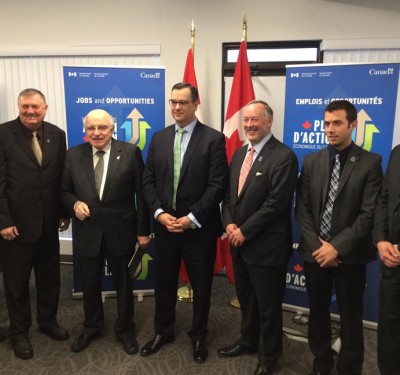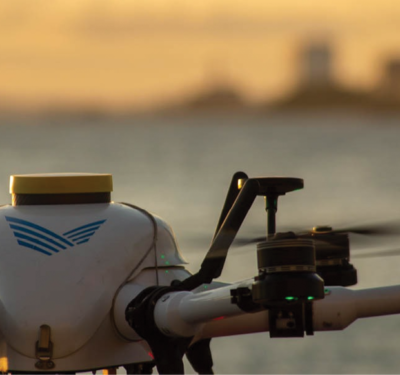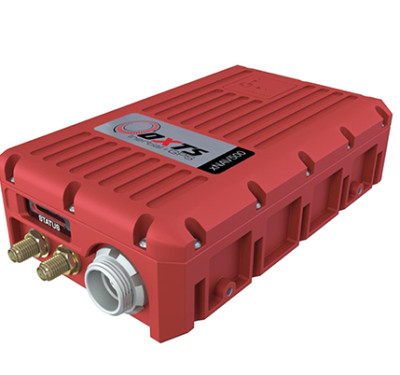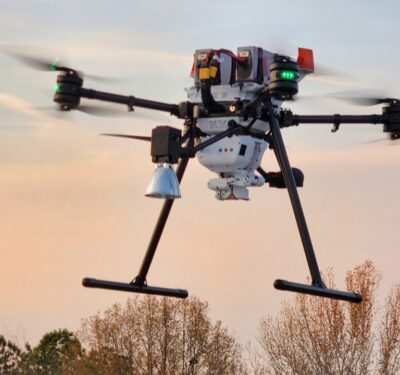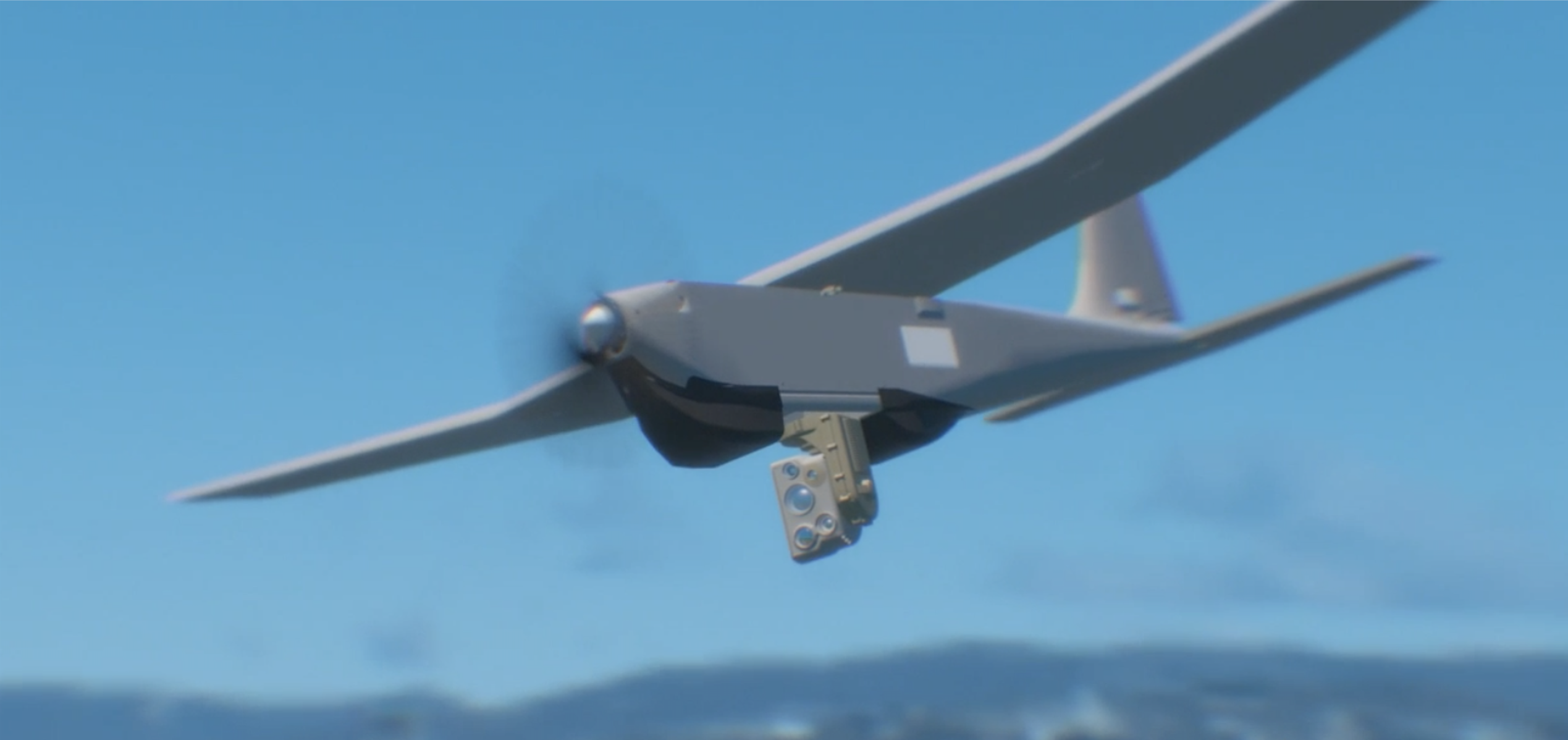
A Puma 3 AE on station.
In biology, a chrysalis marks a stage along a caterpillar’s transformation into a full-grown butterfly or moth.
Now, AeroVironment is releasing Crysalis™, promoting it as nothing less than a UAS transformation. It’s not only a ground control systems, but “ground control simplified,” as AeroVironment product line manager, ground control systems Robert Sutton put it at the July 6 press conference where AeroVironment announced the new product.
Such simplification is welcome. Today’s battlefield can feature a complex array of multiple missions and systems, frontline and command personnel—and those who AeroVironment president/CEO Wahid Nawabi described as “adversaries that are very capable.
“Crysalis simplifies the interface and the interaction between the warfighter and all these different assets,” Nawabi said. It reduces the “cognitive load on the operator,” who can use this “adaptable, integrated, interoperable, simple, scalable modular solution…to win.”
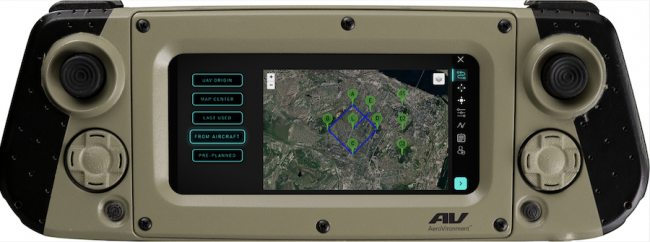
The Crysalis GCS in mission planning mode.
Collaboration for Transformation
To develop Crysalis, AeroVironment reached out to multiple end users, deploying its Raven™ and Puma™ hand-launched UAVs across a wide variety of use cases. Different configuration options around software, hardware and antennas were tested to maximize battlefield collaboration.
“We had four different themes that emerged from talking to our customers,” Sutton enumerated. An intuitive interface so the user can concentrate on the mission. A single solution capable of using multiple capabilities across multiple missions. A standardized user experience to reduce the amount of training between these different systems. And finally, interoperability through a software system that’s integrated into third-party battlefield management applications.
The result? “Anyone on the team can see what’s happening in real time,” Sutton continued. “It’s about multiple users connected to a single UAS, and whether they’re getting real-time situational awareness. Various different team members, all connected together, accomplishing that mission.” And Crysalis’ role? “It’s adaptive, it’s modular, it’s flexible.”
Mark Graybill, AeroVironment’s chief software engineer, UAS, elaborated on the system’s developmental goals.
“We wanted to get away from having a dedicated hardware solution, and instead have a very flexible, modular software solution,” Graybill said. “So the focus, obviously, is on cross-platform development.” Crysalis can run its intuitive interface on Windows or Android, with Linux impending and AI on the horizon.
Light weight was another priority, which Graybill succinctly summed up: “Weight is about how much ammo you can pack. We can run on a very minimal configuration, a pocket DDL [digital data link] radio and a phone, or a much larger operation where we have more elaborate antennas and so on.”
Simplicity is enabled by what’s called the Wizard. Graybill explained: “As you go through step by step, the Wizard tells you the next thing that you need to do,” from mission planning to pre-flight operations to diagnostics support. “That Wizard takes that whole stress of that cognitive load we were talking about off the warfighter. The idea is to make it simple.”
Sutton brought it back to ease and interoperability. “Successful missions are about connecting people in real time, in ways that are simple, intuitive, natural and easy.”
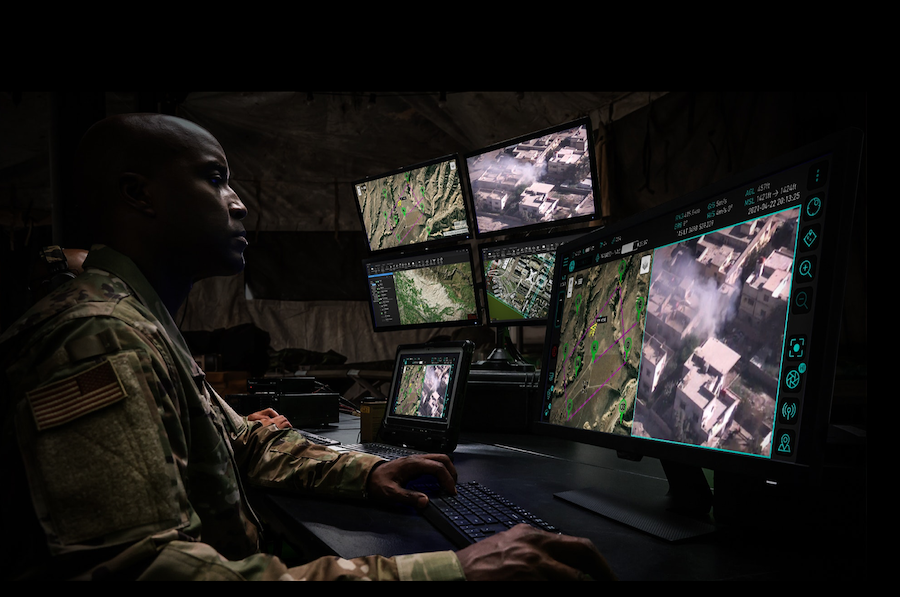
Interoperability proving out at a Crysalis command center.
Variations on a Theme
This overlapping technology allows for reduced training time, since the user experience of working on a phone, desktop or tablet is virtually identical. At the same time, four adaptations customize capabilities. The lightweight, wearable Crysalis RVT [remote video terminal] gains situational awareness via a passive downlink. An Ultralight GCS offers full control of UAS and payloads through virtual control or joystick, or with a wearable smartphone configuration. The Tactical GCS extends operations from 5 to up to 20 kilometers, with a battery splitter offering hot swapping and two different batteries, and cabling to the standard antenna. The Crysalis Command GCS gives mission operations a full-control app loaded onto a ruggedized laptop, providing a battlefield commander with situational awareness.
Throughout, the key is that everyone can share information. “We have them being able to see what’s going on in the field; you have people in the field that are all coordinating those missions,” Sutton said.
The Warfighter’s Perspective
Hunter Williams, an AeroVironment engineering flight test specialist, reiterated Crysalis’ advantages based on his experience as a Marine sergeant who flew Ravens and Pumas in Afghanistan and Iraq.
“Anybody who’s been downrange has carried a lot of weight,” Williams shared, “so the smaller, more slick that we can get, the better. In the most dramatic situations it can mean your life.”
As for simplicity, “there’s only three components: there’s antenna, the batteries and the end-user device. So it’s easy to put on my chest and just keep moving. It’s quick assembly and a quick launch.”
Williams also welcomed the system’s situational awareness. “We’re constantly moving, our enemy’s moving, our assets are moving. It’s important that we’re still able to see our enemy, our friendlies, anything. With the RVT feature, everyone will be able to see the POV of the operator. If I’m flying the Puma off of the Crysalis, and my teammate is five clicks away, he will be able to see exactly what I’m seeing. We don’t have to necessarily speak. And then if we’re sending something to higher echelons, we can digitally send that as well.
“Everything is just to limit the amount of time it takes in the kill chain—the time that we identify a target to the time we prosecute the target.”
Going-Forward Ops
Crysalis can store and recall missions. It can send high or low-resolution images. It’s designed for plug-and-play compatibility with NETT Warrior. Twice-yearly upgrades are anticipated. And, Nawabi noted, the goal is for the system to become “ubiquitous and interoperable with all of our assets, whether it’s on the ground, in the air or even under the water.”
Open architecture via a remote connection manager provides linkage to additional industry-standard interfaces, and Nawabi saw potential for ubiquity. “Their vision for the solution in this architecture is that it’s interoperable with not only our assets, but non-AV assets in the future,” he said. “What’s in the works right now is what we call the Crysalis software development category,” a way for third parties to add their own capabilities.
“We don’t want to do anything to force our customers one way or the other,” Nawabi said, “because we want to make sure that they make the right choice for their missions, their operations.” But, he added, “we have tremendous hopes for this product long-term, because it’s going to become the attribute of how our customers engage and use our systems.
Photos courtesy of AeroVironment.


